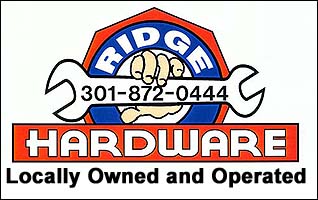By MORGAN GIBSON
WASHINGTON (Feb. 18, 2010) - "Snowpocalypse" removal methods won't hurt the Chesapeake Bay as they flow downstream, but spring showers are another matter, experts say.
The salt poured on snow-covered roads is not a problem for the brackish bay because it is a mixture of salt and fresh water. What hurts are the plastic bags, oil, animal manure, dirt and trash that flow into the Chesapeake every spring.
In more developed areas, the problem is especially prevalent because there are lots of hard surfaces, like concrete and roof tops, so rainwater isn't able to seep into the ground.
Instead the water runs along hard surfaces picking up trash, chemical contaminants and dirt and carrying it into the water.
A lot of sediment in the bay can block sunlight and inhibit or destroy aquatic plant growth or habitats.
Excess nutrients, such as nitrogen and phosphorus, from things like fertilizers, septic systems or animal manure, can cause algae blooms that also block sunlight and take away the water's oxygen.
"Urban and suburban runoff contributes about 20 percent of Maryland's nitrogen load to the bay," said Jay Apperson, spokesman for the Maryland Department of the Environment. "Nitrogen is the most serious pollutant to the bay."
In April 2007, Gov. Martin O'Malley signed the "Stormwater Management Act of 2007," which helps counties and cities to produce more environmentally friendly new development.
Despite the state's efforts, storm water still remains a problem.
"We do need to do a better job of storm water management," said Beth McGee, Chesapeake Bay Foundation's senior water quality scientist.
But those experts say the recent pile-up of salted snow does not harm the Chesapeake Bay.
Road salt can be toxic for freshwater animals, however, so it should be used with caution inland near streams and rivers.
Other contaminants, like oil and grease from cars, are sometimes mixed into the snow as well, but their effect on the Bay is the same as runoff from a heavy rain.
The MDE issued guidelines for managing large amounts of snow during the storm to keep removal clean and green.
The guidelines stated that "relatively clean snow removed from paved areas" may be placed into large tidal water bodies, like the Baltimore Harbor.
The guidelines also said to avoid disposing of snow that is heavily contaminated with dirt, salt, and other pollutants, and to place the snow in parks or other big open areas so it can melt gradually.
Capital News Service contributed to this report.


